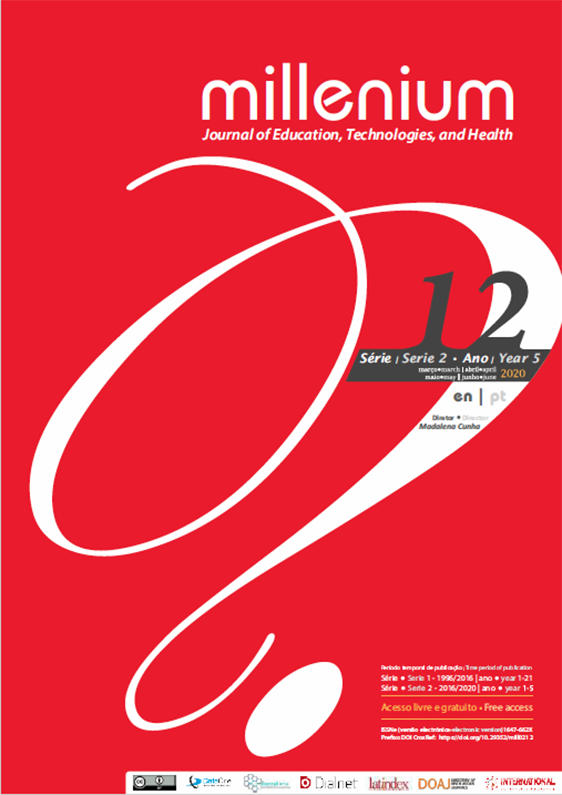Estudo e análise de um novo dispositivo para a reabilitação da articulação Tibiotársica
DOI:
https://doi.org/10.29352/mill0212.01.00324Palavras-chave:
articulação tibiotársica, automação, dispositivo, reabilitação, therapheetResumo
Introdução: Atualmente existem vários tipos de dispositivos e técnicas para a reabilitação da articulação tibiotársica. No entanto, a reabilitação completa e eficaz ainda está aquém das expectativas, uma vez que os dispositivos existentes não são adaptáveis ao nível do binário e do número de repetições e sessões a executar, pois estas dependem de cada paciente e do estádio em que este se encontra.
Objetivos: Melhorar um dispositivo mecatrónico, de reabilitação da articulação tibiotársica, o Therapheet.
Métodos: Neste estudo é apresentada uma revisão dos protocolos de reabilitação da articulação tibiotársica, assim como a classificação dos dispositivos utilizados para este propósito. Assim, a finalidade é aperfeiçoar o Therapheet, desenvolvido no Departamento de Engenharia Mecânica da Universidade do Minho, obtendo-se um dispositivo de reabilitação viável, funcional e seguro, destacando-se dos restantes no mercado, uma vez que permite a executação dos seis exercícios de reabilitação.
Resultados: Foi obtido um protótipo de equipamento para reabilitação da articulação tibiotársica, propondo alterações de melhoria de acordo com as especificidades e os requisitos necessários para um dispositivo deste tipo, tendo sido submetido a uma série de testes preliminares para verificar a sua funcionalidade, desempenho e adequabilidade. O equipamento demonstrou ser funcional, a nível de execução dos movimentos de reabilitação do tornozelo, no entanto, ainda manifesta algumas falhas ao nível da estabilidade do utilizador, movimentos bruscos, e sobretudo disfunções provenientes de excesso de massa que compõe a sua estrutura e de limitações da tecnologia pneumática adotada.
Conclusões: O controlo da amplitude dos ângulos característicos dos movimentos do pé ainda é feito manualmente, pelo que seria significativa a implementação de um sistema automatizado que possibilitasse o controlo da graduação da amplitude, de acordo com a fase de reabilitação do paciente. Uma opção seria a implementação de uma nova tecnologia, como a inserção de servomotores.
Downloads
Referências
Alcocer, W., Vela, L., Blanco, A., Gonzalez, J., & Oliver, M. (2012). “Major trends in the development of ankle rehabilitation devices”, DYNA, vol. 79, n. 176, 45–55.
Bengochea, K. (2019). “Ankle Joint” (webpage). USA. [last access 7 Jan. 2020] Retrieved from: https://www.kenhub.com/en/library/anatomy/the-ankle-joint.
Brockett, C. L., & Chapman, G. J. (2016). “Biomechanics of the ankle. Orthopedics and Trauma”, vol. 30, issue 3, pp. 232–238. doi: 10.1016/j.mporth.2016.04.015.
Chang, T. C. & Zhang, X. D. (2019), “Kinematics and reliable analysis of decoupled parallel mechanism for ankle rehabilitation”, Microelectron. Reliab. vol. 99. n. June, 203–212.
Cruz, A. (2018). “Estudo e análise de um dispositivo de reabilitação da articulação tibiotársica”. (MSc thesis, University of Minho).
Donovan, L., Hetzel, S., Laufenberg, C. R. & McGuine, T. A. (2020). “Prevalence and Impact of Chronic Ankle Instability in Adolescent Athletes”, Orthop J Sports Med. 18;8(2). doi: 10.1177/2325967119900962.
Hussain, S., Jamwal, P. K., & Ghayesh, M. H. (2017). “State-of-the-art robotic devices for ankle rehabilitation: Mechanism and control review”, Proc. Inst. Mech. Eng. Part H J. Eng. Med., vol. 231, n. 12, 1224–1234. doi: 10.1177/0954411917737584.
Kulunkoglu, B. A. & Celik, D. (2019). «Reliability and Validity of the Turkish Version of Foot and Ankle Ability Measure for Patients With Chronic Ankle Disability», J. Foot Ankle Surg., vol. 58, n. 1, pp. 38–41. doi: 10.1053/j.jfas.2018.07.007.
Miao, Q., Zhang, M., Wang, C., & Li, H. (2018). “Towards optimal platform-based robot design for ankle rehabilitation: The state of the art and future prospects”, J. Healthc. Eng., vol. 2018, 1-9. doi: 10.1155/2018/1534247.
Miles, T. (2019). “How to Cure a Swollen Ankle” (webpage). USA. [last access 7 Jan. 2020] Retrieved from: https://www.wikihow.com/Cure-a-Swollen-Ankle.
Ribeiro, C. (2014). “Dispositivo Mecatrónico de Apoio à Fisioterapia”. (MSc thesis, University of Minho).
Sears, B. (2020). “Physical Therapy for a Broken Ankle” (webpage). Portugal. [last access 7 Jan. 2020] Retrieved from: https://www.verywellhealth.com/physical-therapy-after-ankle-fracture-2696531.
Tsoi, Y. H. (2011). “Modelling and adaptive interaction control of a parallel robot for ankle rehabilitation”. PhD thesis, University of Auckland.
van den Bekerom, M.P., Struijs, P.A., Blankevoort, L., Welling, L., van Dijk, C. N., Kerkhoffs, G. M., (2012). What Is the Evidence for Rest, Ice, Compression, and Elevation Therapy in the Treatment of Ankle Sprains in Adults?, Journal of Athletic Training: Jul/Aug 2012, Vol. 47, No. 4, 435-443. doi: 10.4085/1062-6050-47.4.14
Walsh, B.M., Bain, K.A., Gribble, P.A. & Hoch, M.C., (2020). “Exercise-Based Rehabilitation and Manual Therapy Compared With Exercise-Based Rehabilitation Alone in the Treatment of Chronic Ankle Instability: A Critically Appraised Topic”. J Sport Rehabil. Jan 7,1-5. doi: 10.1123/jsr.2019-0337.
Weerasekara, I., Osmotherly, P., Snodgrass, S., Marquez, J., Zoete, R., Rivett, D. A. (2018), “Clinical Benefits of Joint Mobilization on Ankle Sprains: A Systematic Review and Meta-Analysis”, Archives of Physical Medicine and Rehabilitation, Volume 99, Issue 7, 1395-1412, ISSN 0003-9993. doi: 10.1016/j.apmr.2017.07.019
Zhang, M. (2016). “Improving Effectiveness of Robot-Assisted Ankle Rehabilitation via Biomechanical Assessment and Interaction Control”. PhD thesis, University of Auckland.
Downloads
Publicado
Como Citar
Edição
Secção
Licença
Direitos de Autor (c) 2020 Millenium - Journal of Education, Technologies, and Health

Este trabalho encontra-se publicado com a Licença Internacional Creative Commons Atribuição 4.0.
Os autores que submetem propostas para esta revista concordam com os seguintes termos:
a) Os artigos são publicados segundo a licença Licença Creative Commons (CC BY 4.0), conformando regime open-access, sem qualquer custo para o autor ou para o leitor;
b) Os autores conservam os direitos de autor e concedem à revista o direito de primeira publicação, permitindo-se a partilha livre do trabalho, desde que seja corretamente atribuída a autoria e publicação inicial nesta revista.
c) Os autores têm autorização para assumir contratos adicionais separadamente, para distribuição não-exclusiva da versão do trabalho publicada nesta revista (ex.: publicar em repositório institucional ou como capítulo de livro), com reconhecimento de autoria e publicação inicial nesta revista.
d) Os autores têm permissão e são estimulados a publicar e distribuir o seu trabalho online (ex.: em repositórios institucionais ou na sua página pessoal) já que isso pode gerar alterações produtivas, bem como aumentar o impacto e a citação do trabalho publica
Documentos necessários à submissão
Template do artigo (formato editável)





